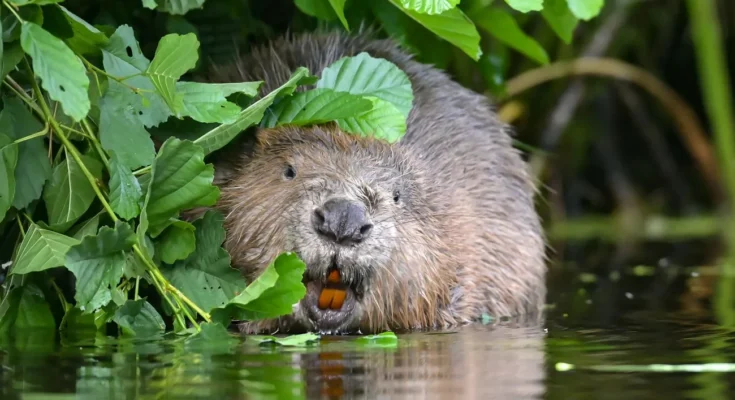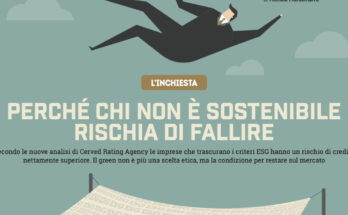How delicious is beaver meat? Brandenburg Farmers President Henrik Wendorff isn’t going to take this menu lightly. “It’s an interesting dish with high-quality meat,” he told the German Press Agency. The beaver is a vegetarian and is picky in choosing plants.
A much smaller farmers’ association demanded a few days ago: “We consider the current practice of disposing of beavers including their fur and carcasses to be unsustainable, especially as there are opportunities for recycling here.” In churches in the Middle Ages, otters, because they were good swimmers and had scaly tails, looked like fish – and ended up on plates during Lent.
Behind the debate over whether beaver meat should be included in the diet, there is a strong and ongoing argument: Are these rodents a nuisance or a beneficial landscape planner?
What is the beaver conflict about?
There have been calls to include otters, which can cause major damage, in future hunting laws and make them easier to shoot. According to the Federal Nature Conservation Act, it is prohibited to capture, injure, or kill beavers. This is included in the Fauna-Flora-Habitat Guidelines EU listed as a strictly protected species. However, in an interview in October, Federal Agriculture Minister Alois Rainer (CSU) questioned the special protection status and – similar to the case of wolves – called for a review at EU level.
Does the state government want to deal with beavers?
One thing is clear: Brandenburg’s beaver regulations are being revised. The validity period expires in mid-March 2026. In the coalition agreement SPD and BSW said: “We will use every opportunity to introduce management of wolf and beaver populations.”
Regarding beaver shooting and the draft regulations, the Ministry of Agriculture does not want to let anyone see its cards. Involvement of affected associations has not yet begun, he said. The Nabu nature conservation association stressed: “The country does not have the authority to downgrade the protection status of otters.”
When can beavers be shot so far?
Until recently, otters were only allowed to be “removed”, as the jargon says, in exceptional cases with official permission. This recently occurred due to apparent threats to the safety of the flood embankments on the Oder and at BER airport. The meat and fur could then be used personally. Otters are not allowed on official restaurant menus.
How is the beaver population developing in Brandenburg?
The State Office for the Environment currently estimates the beaver population at around 4,000 to 4,200 animals in Brandenburg. It is present almost everywhere. As the largest rodent in Europe, the beaver (castor fiber) reaches a size of about 1.30 meters including the tail. According to estimates, there are about 40,000 otters throughout the country.
He was once thought to have nearly disappeared in Germany and was then placed under strict protection. Since the fall of communism, beaver numbers have increased significantly. According to the farmers’ association, around 200 beavers are shot every year in Brandenburg – cases where they cause damage.
What damage do beavers cause?
According to the German Wildlife Foundation, otters live in slow-flowing and stagnant waters, and in trees near river banks. They use their incisors to cut down entire trees and build dams that can cause flooding.
Rice fields can be flooded and land can be damaged due to water damming. There was conflict with agriculture, which complained of economic damage. According to the ministry, beavers cause problems especially in districts along the Oder and Spreewald.
During floods, beavers try to escape into embankments, where farmers’ associations say they can dig deep holes and compromise the stability of protective structures. According to the Dahme-Spreewald district, beaver holes also block important drainage channels at BER airport.
Beavers also live in winter: the bark of young trees becomes a vegetarian diet, especially when nature no longer provides them with much food.
Do beavers cause harm?
According to the agriculture department, the land and water association is spending millions in additional water maintenance costs because of the beavers. In 2023, state funding available is around 695,000 euros, with additional expenditure totaling around 1.39 million euros. In 2024 almost 389,000 euros with additional costs of around 1.65 million euros.
The ministry said it was a voluntary service of the country. The damage itself will not be replaced. However, preventative measures to limit beaver damage remain supported. For example, trees can be protected with wire mesh or protective layers, and dams can be secured with steel layers.
Pest species or beneficial species – what do farmers and hunters want?
Years ago, the German Hunting Association demanded: “If in areas like Brandenburg beavers often break down embankments and dam up flood ditches, there is almost no sense of strict protection there.”
The state farmers’ association told DPA upon request: “Treatment of this strictly protected animal dates back decades, when the animal was threatened with extinction.” A new approach is needed. “Downgrading of protected status is long overdue and no longer necessary and stock management that includes prevention as well as hunting is necessary,” Farmers President Wendorff demanded.
What do species and nature conservationists think about this?
The Environment and Nature Association in Germany sees it differently: “Unfortunately, beavers living on the Oder are suspected of causing only trouble (…).” Nabu state chairman Björn Ellner stressed that beavers are “an important natural ally” in supporting groundwater levels, which are largely falling. This prevents drying out of the landscape and creates valuable habitat.
According to conservationists of the species, preventive protection measures should be the first priority when dealing with otters. Ellner said there is good experience installing drainage pipes in beaver dams. This is intended to limit the height of the water surface to prevent flooding. From a conservationist’s point of view, the problem could also be avoided if the 20 meter wide strip along the river were not used for farming or fish ponds.
© dpa-infocom, dpa:251114-930-291481/1



